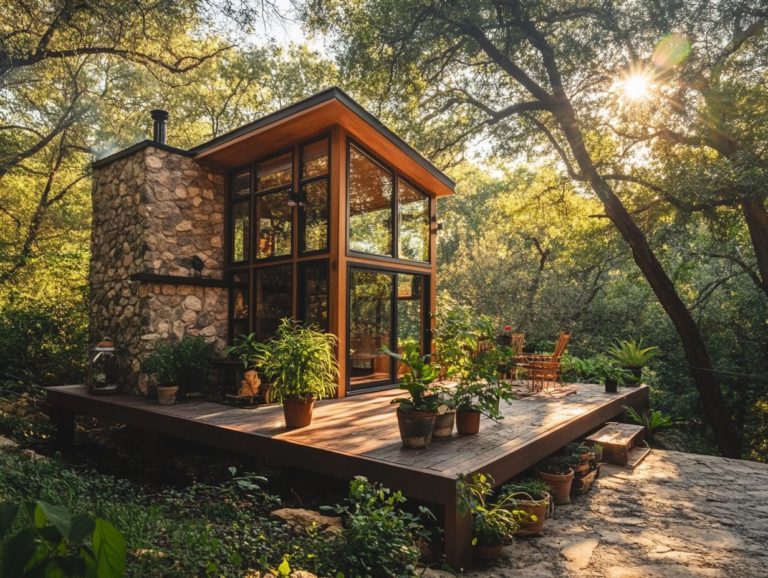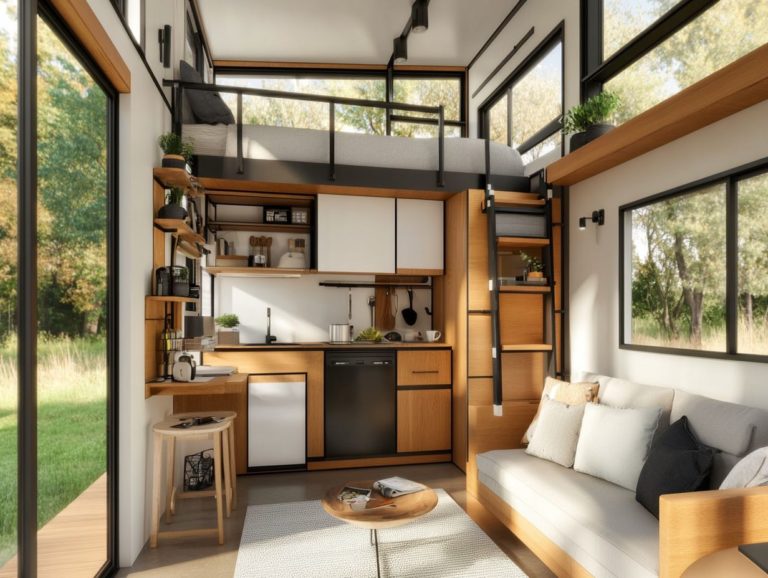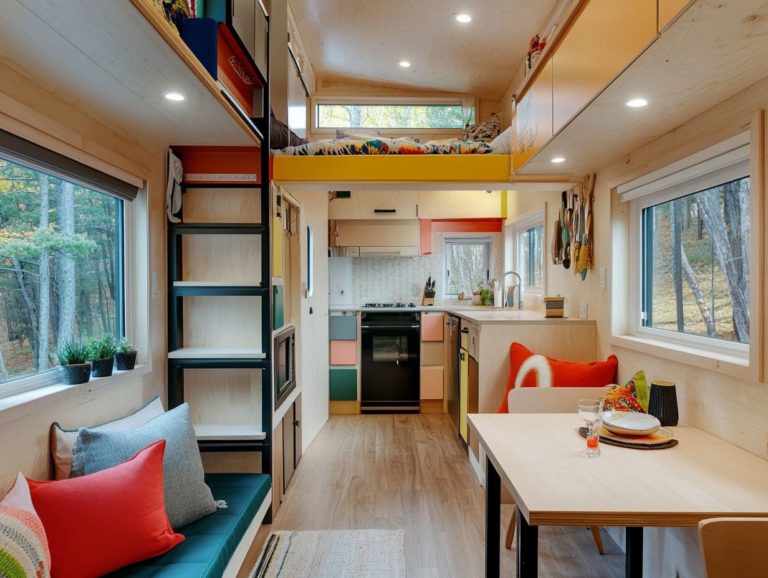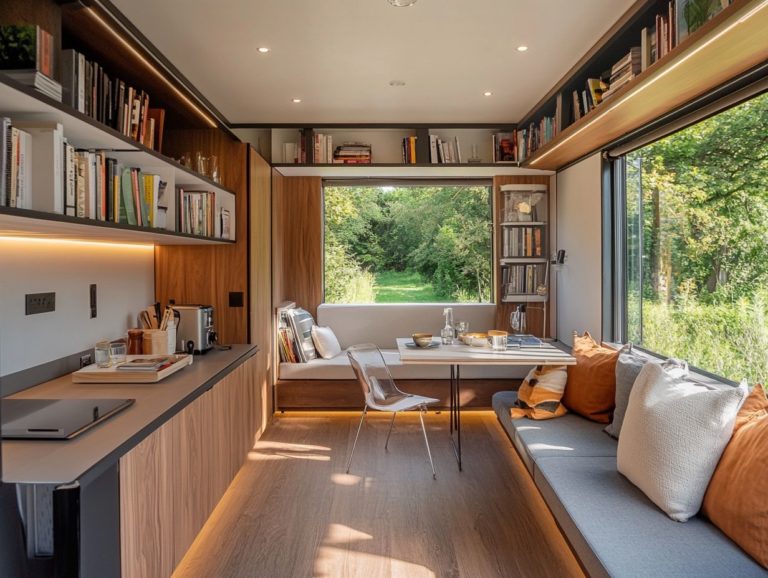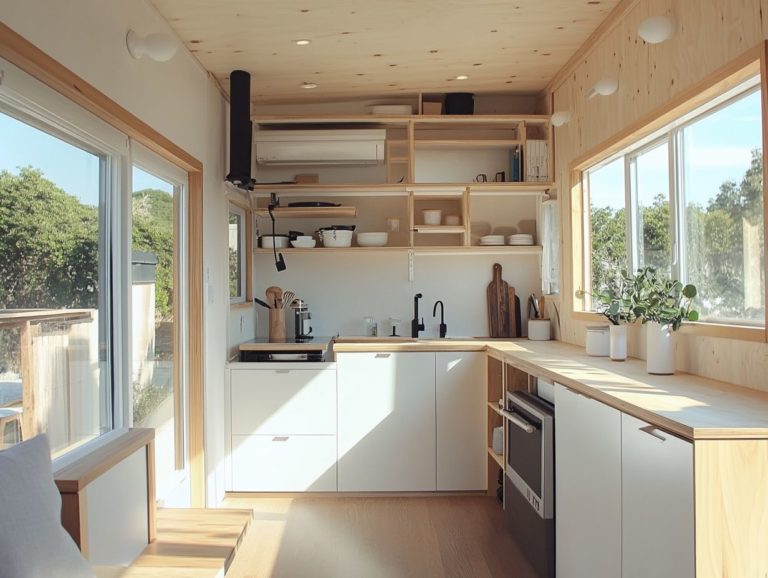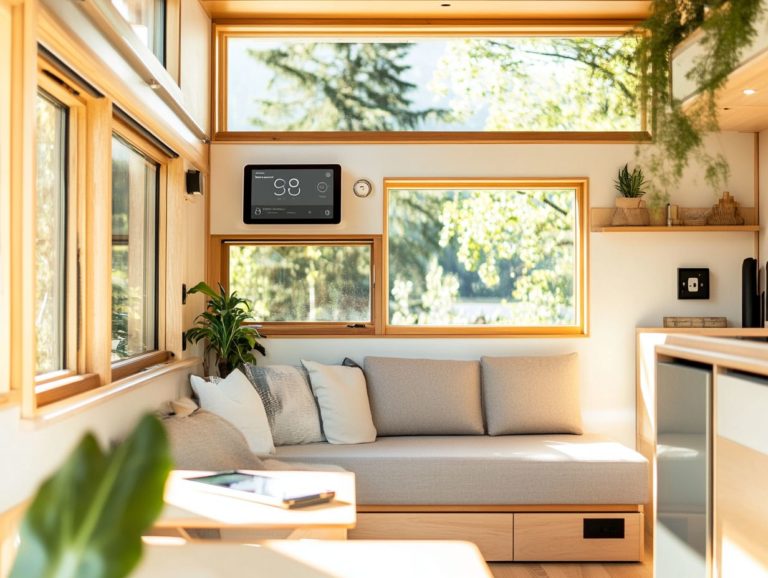Tiny House Design Elements for Comfort and Function
In a world where space is a luxury, tiny houses have become the ultimate solution for merging functionality with comfort.
This article will guide you through the essential design elements that elevate tiny living from mere feasibility to pure enjoyment.
From clever storage solutions to versatile furniture, you ll discover innovative strategies to optimize your space. You will also explore how to create a warm atmosphere, incorporate sustainable materials, and personalize your tiny home to reflect your unique style.
Get ready to unlock the full potential of tiny living!
Contents [hide]
- Key Takeaways:
- Maximizing Space and Functionality
- Designing for Comfort
- Sustainable Design Elements
- Incorporating Personal Style
- Frequently Asked Questions
- What are some important design elements for a comfy and functional tiny house?
- How can I maximize space in my tiny house?
- What are ways to make a tiny house feel more spacious?
- What design elements enhance comfort in a tiny house?
- What should I consider for functional tiny house design?
- How can I make my tiny house more sustainable?
Key Takeaways:
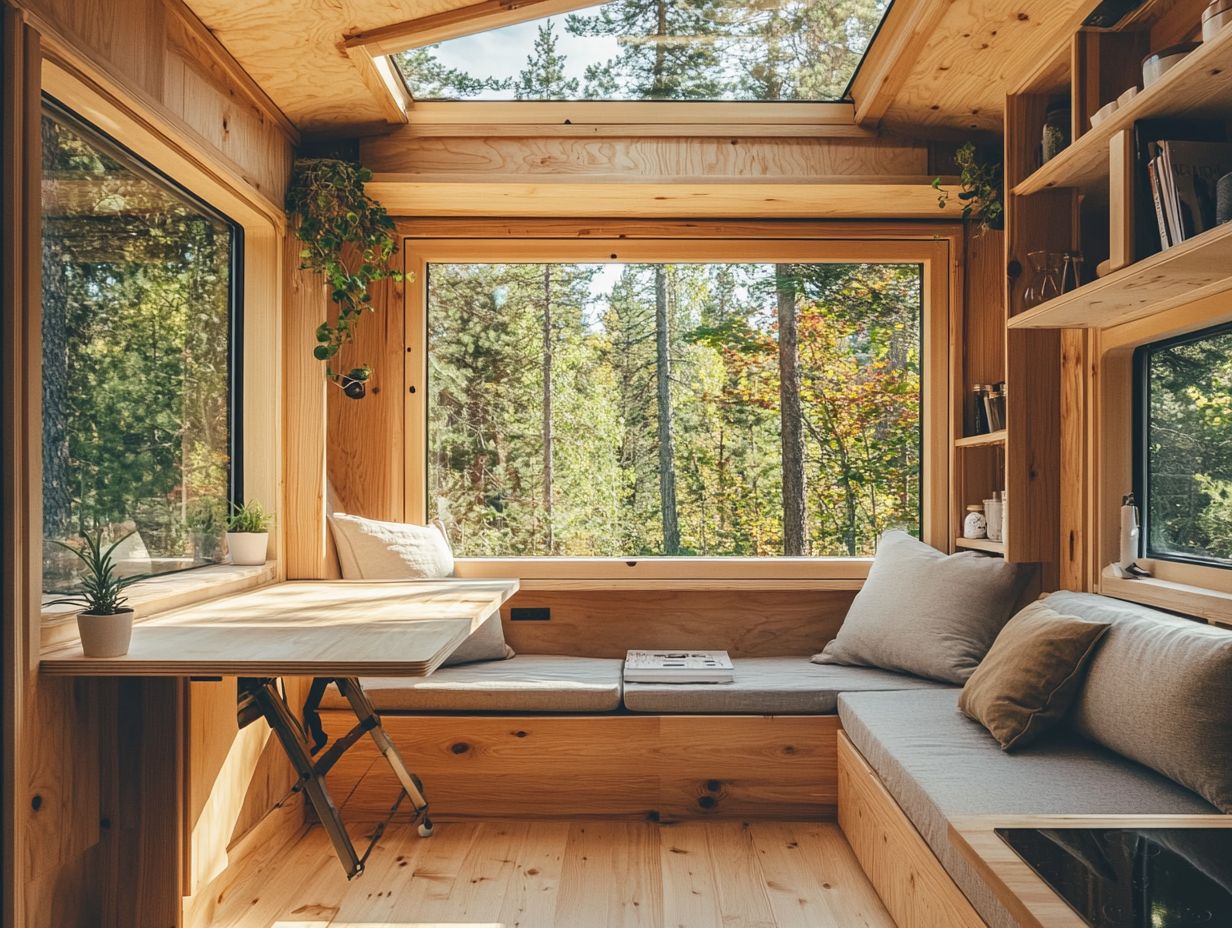
- Maximize space and functionality with smart storage solutions and multi-functional furniture for a more comfortable and efficient tiny house living experience.
- Design for comfort by creating a cozy atmosphere and maximizing natural light and airflow in your tiny house, promoting relaxation and well-being.
- Incorporate sustainable design elements, such as eco-friendly materials and energy efficiency techniques, to reduce your carbon footprint and save money in the long run.
What is a Tiny House?
A tiny house, often dubbed a tiny home, is your gateway to compact living that champions efficiency and sustainability. Typically measuring under 400 square feet, these dwellings incorporate innovative design elements that maximize every inch of space.
Popularized by visionaries like Sarah Bronstein and companies such as Pacifica Tiny Homes in Oregon, tiny homes blend the principles of minimalistic living living with less to practical functionality. They re an ideal choice for those seeking a cozier, more sustainable lifestyle.
Embrace the movement toward compact living. It encourages you to downsize, declutter, and reconnect with nature and community.
The benefits of tiny homes go beyond mere affordability; they foster sustainable living practices that significantly reduce the environmental footprint often tied to traditional housing. Many of these homes are crafted with eco-friendly materials and equipped with energy-efficient systems, like solar panels and composting toilets.
Much like RVs, tiny homes offer mobility and flexibility, allowing you to explore new environments without the burden of a hefty mortgage or soaring utility bills. With a wealth of innovative designs tailored to meet diverse needs, individuals from all walks of life are gravitating towards this transformative lifestyle, cultivating a vibrant sense of community among tiny home enthusiasts.
Maximizing Space and Functionality
Maximizing space and functionality in tiny homes is crucial for creating a livable environment that fulfills your everyday needs without compromising on comfort or style.
You can achieve this through thoughtful design choices and innovative solutions, such as multi-functional furniture and smart home technology.
Smart Storage Solutions
Implementing smart storage solutions is essential in tiny homes. Options like under-stair storage and wall-mounted organizers can cleverly use otherwise wasted space, allowing you to keep your living areas organized and functional.
By maximizing every nook and cranny, you can transform your compact living environment into an efficient haven. Under-stair areas can host everything from shoe racks to mini bookcases, while wall-mounted organizers free up floor space without sacrificing accessibility. Compact appliances designed for smaller kitchens help streamline functions and maintain an uncluttered appearance.
If you’re looking to optimize your space, incorporating multi-purpose furniture can also enhance functionality, ensuring that every item has a designated place without compromising on style or comfort.
Ready to explore tiny home options? Check out resources that can help you on your journey!
Multi-functional Furniture
Multi-functional furniture offers innovative designs that serve multiple purposes. For example, a sofa can easily convert into a bed, while furniture with built-in storage keeps your space organized.
This approach maximizes your precious square footage while promoting energy efficiency by reducing the need for excess pieces that would otherwise clutter your space. Consider a dining table that doubles as a workspace, allowing you to transition seamlessly between activities throughout the day without sacrificing style.
Features like foldable designs and built-in storage compartments ensure that every inch of your home is utilized effectively, creating an open feel while adhering to eco-friendly principles.
By thoughtfully integrating multi-functional furniture, you can maintain both comfort and practicality in your tiny home, showcasing how innovative design can transform limited spaces into cozy, efficient havens.
Designing for Comfort
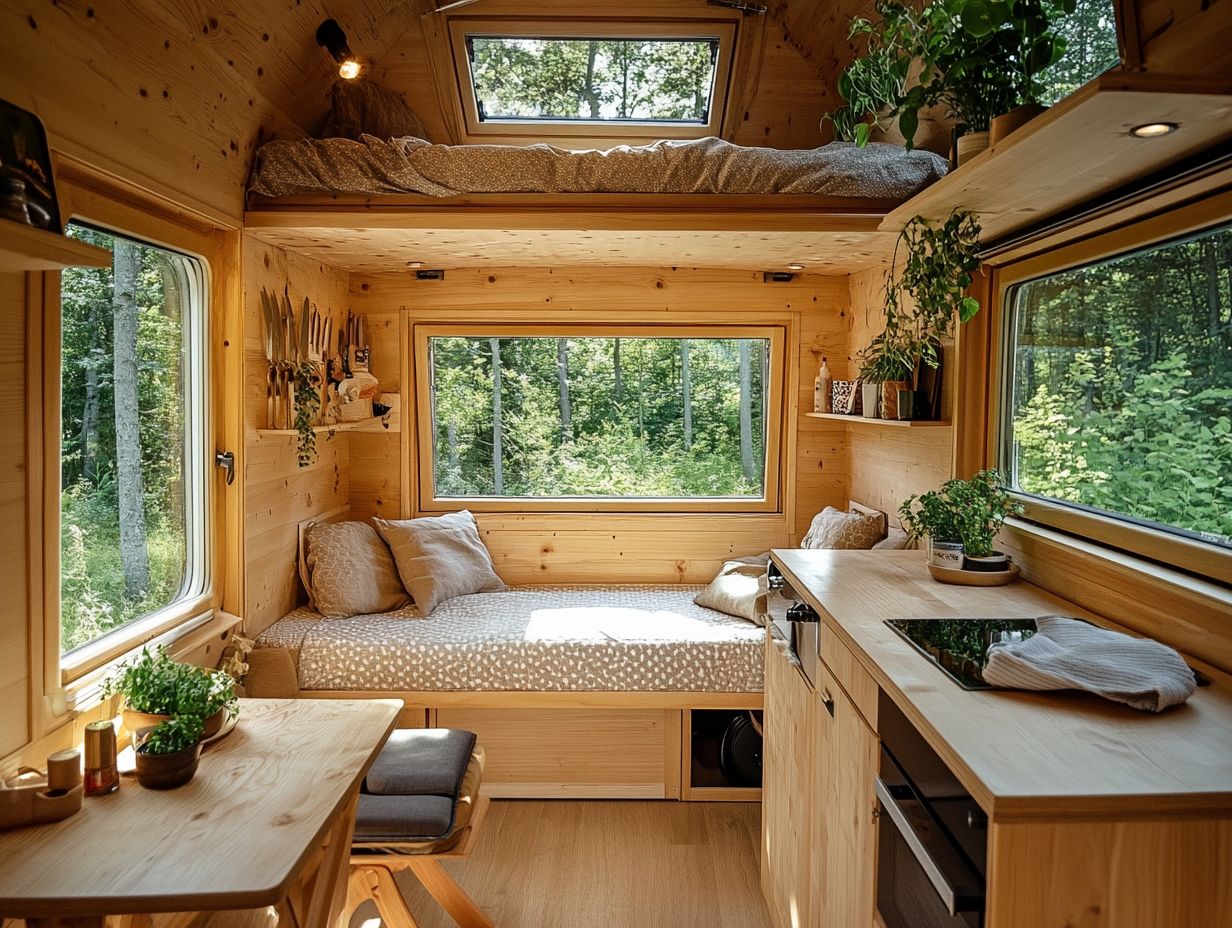
Transform compact spaces into cozy havens with light colors and regular decluttering. This not only enhances aesthetics but also improves your living experience.
Creating a Cozy Atmosphere
Personalize your tiny home to reflect your unique taste. Use mirrors to amplify space and natural light, creating a warm environment.
Select decor that resonates with you, adding warmth and fostering a genuine sense of belonging. Incorporating textures, such as soft throws and plush cushions, can make a remarkable difference in how comfortable and welcoming your space feels.
Mirrors are essential tools in this transformation. They allow light to bounce around, creating the illusion of a larger area while adding a stylish touch. By harnessing natural light through thoughtfully placed windows or light-colored fabrics you can brighten your space, promoting an uplifting ambiance.
Each of these methods contributes uniquely to turning your tiny space into a cozy haven that feels distinctly yours.
Maximizing Natural Light and Airflow
Maximizing natural light and airflow in tiny homes is essential for achieving energy efficiency and creating a refreshing living environment. By utilizing strategic window placements, heating, ventilation, and air conditioning (HVAC) systems, and outdoor spaces, you can optimize both light and air circulation.
Position your windows to capture sunlight throughout the day, brightening your interiors while minimizing your dependence on artificial lighting. When combined with energy-efficient HVAC systems, your tiny home can maintain a comfortable climate without excessive energy consumption.
Connecting your indoor spaces with outdoor areas through large sliding doors or expansive decks encourages a seamless transition that invites fresh air and enhances the overall ambiance. This interconnectedness not only expands your perceived space but also promotes a healthier lifestyle, allowing you to enjoy the benefits of nature right from your living room.
Sustainable Design Elements
Incorporating sustainable design elements into tiny homes benefits the environment and elevates your overall living experience.
By integrating features like sustainable materials, greywater systems, and rainwater harvesting, you play a vital role in promoting eco-friendly living. These thoughtful choices minimize your ecological footprint and create a harmonious and enriching space that reflects your values.
Don’t miss out on these tips to elevate your space! Start applying them to your tiny home today!
Eco-friendly Materials and Features
Utilizing eco-friendly materials and features is essential for your tiny home. Options like LEED-certified products (which are certified for their energy efficiency) and ENERGY STAR-rated appliances (which meet strict energy efficiency guidelines) not only help reduce your environmental footprint but also enhance the livability of your compact space.
These sustainable choices do more than just benefit the environment; they lower emissions, conserve resources, and provide long-term savings through decreased utility bills. Integrating such elements into your tiny home design promotes a healthier lifestyle because many eco-friendly materials are non-toxic and enhance indoor air quality.
Homes that earn certifications like LEED and ENERGY STAR often boast higher resale values thanks to their innovative design and sustainability features. Enjoy the modern comforts while contributing to a greener planet!
Energy Efficiency Techniques
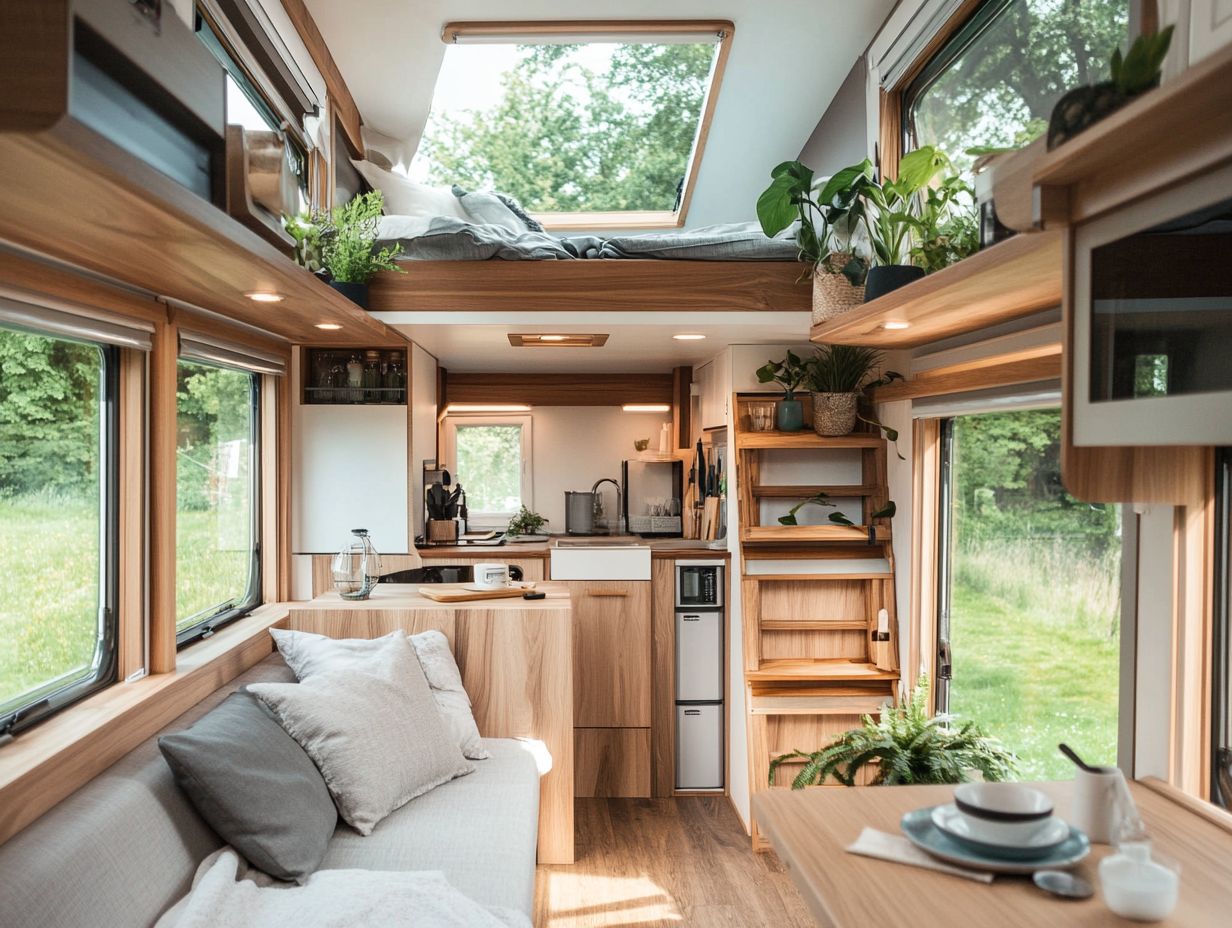
Implementing energy efficiency techniques is essential in tiny homes, especially when you adhere to passive house standards (energy-efficient building designs that keep homes warm and cool naturally) and integrate smart home technology to optimize energy use.
By focusing on high-quality insulation and strategically placed windows, you can harness natural light while minimizing your dependence on artificial heating and cooling. Energy-efficient appliances complement these efforts, allowing you to enjoy minimal energy consumption without sacrificing functionality.
Smart home technology plays a pivotal role; automated systems adjust temperature settings based on occupancy, leading to significant savings. To elevate your sustainability efforts, consider renewable energy sources like solar panels, providing greater independence from traditional energy grids and helping reduce your carbon footprint.
Incorporating Personal Style
Incorporating your personal style into a tiny home gives you the power to craft a uniquely personalized design that truly resonates with your tastes. This transformation turns your space into a cozy haven, enhancing your enjoyment while reflecting your identity in every corner.
Making the Space Your Own
Transforming your tiny home into a personal sanctuary involves carefully selecting elements that resonate with your lifestyle and preferences. From decor to color schemes, it s about making sure your space truly reflects your cozy haven.
To enhance this intimate setting, think about incorporating furnishings that not only complement the scale of your home but also showcase your unique taste. Blending vintage and modern pieces can create an aesthetic that stands out. Choosing a warm color palette with bold accents can infuse your space with life, inviting a sense of warmth and comfort.
Personalized decor like artwork, photographs, or handmade crafts serves as cherished focal points, adding depth to your tiny dwelling.
Customization Tips and Tricks
Customization tips and tricks can elevate both functionality and aesthetics in tiny homes. By integrating personalized design elements, selecting multi-functional furniture, and optimizing for compact living, you can transform your space into something extraordinary.
Thoughtfully considering your lifestyle and preferences allows you to craft spaces that embody your personality while catering to your daily needs. Choose colors and materials that resonate with your style, ensuring that every corner exudes warmth and invitation.
Incorporating multi-functional furniture, like storage ottomans or foldable tables, maximizes utility while maintaining comfort. Employing space optimization strategies, such as vertical storage solutions or utilizing under-bed areas, helps create an illusion of spaciousness, ensuring every square inch serves a purpose. For those interested in more innovative approaches, exploring tiny house design ideas for off-grid living can offer creative inspiration.
Frequently Asked Questions
What are the benefits of living in a tiny home?
Living in a tiny home can lead to reduced living expenses, a smaller environmental footprint, and a simpler lifestyle.
How can I personalize my tiny home?
You can personalize your tiny home by selecting decor, furniture, and color schemes that reflect your unique style and preferences.
What energy efficiency tips can I implement?
Consider using energy-efficient appliances, high-quality insulation, and smart home technology to optimize energy use.
What are some important design elements for a comfy and functional tiny house?
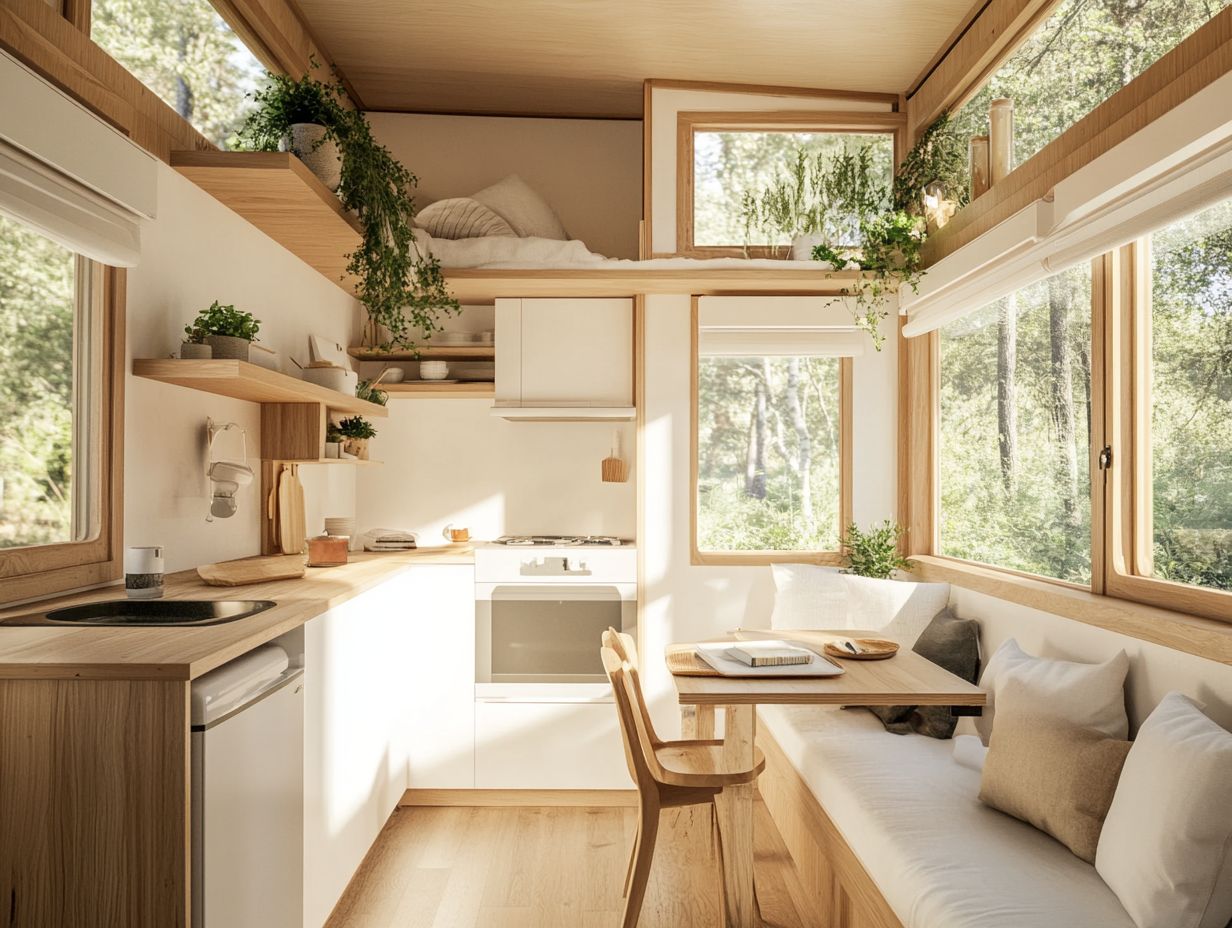
Important design elements include using space wisely, furniture that serves multiple purposes, natural light, and good ventilation.
How can I maximize space in my tiny house?
To make the most of your space, include built-in storage and use vertical space. Choose furniture that doubles as storage, like beds with drawers or fold-out tables.
What are ways to make a tiny house feel more spacious?
Light and neutral colors can open up a space. Mirrors can create depth, and keeping clutter to a minimum makes a big difference!
What design elements enhance comfort in a tiny house?
Using space efficiently and ensuring good natural light matters. Cozy touches, like soft textiles and comfortable seating, can make a tiny home feel warm and inviting.
What should I consider for functional tiny house design?
Think about the needs and lifestyle of the people living there. Use durable and space-saving materials and smart appliances.
How can I make my tiny house more sustainable?
Use eco-friendly materials and energy-efficient appliances. Consider solar panels for a renewable energy source!
Want to explore more tips for tiny house living? Check out our other guides!

